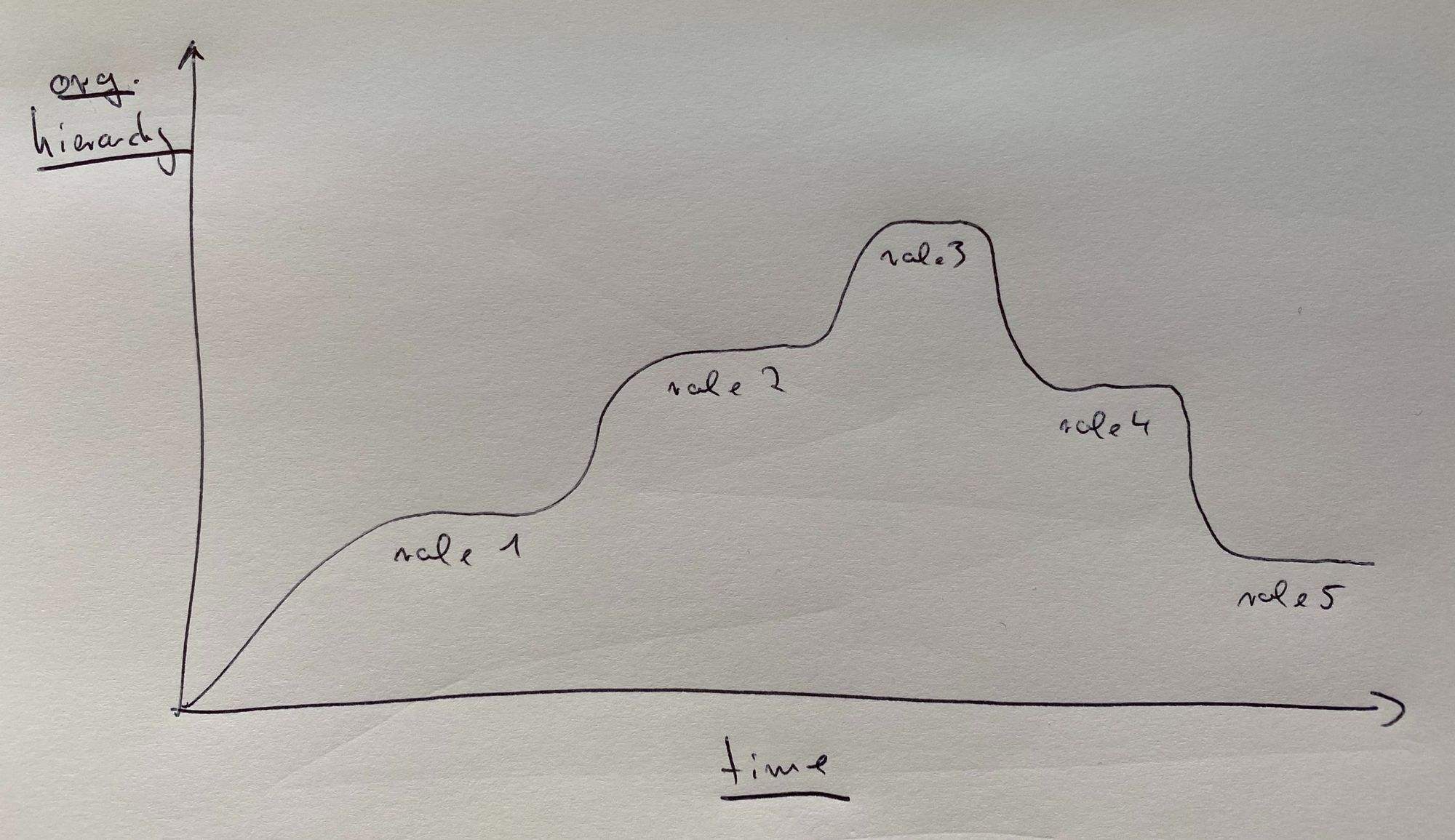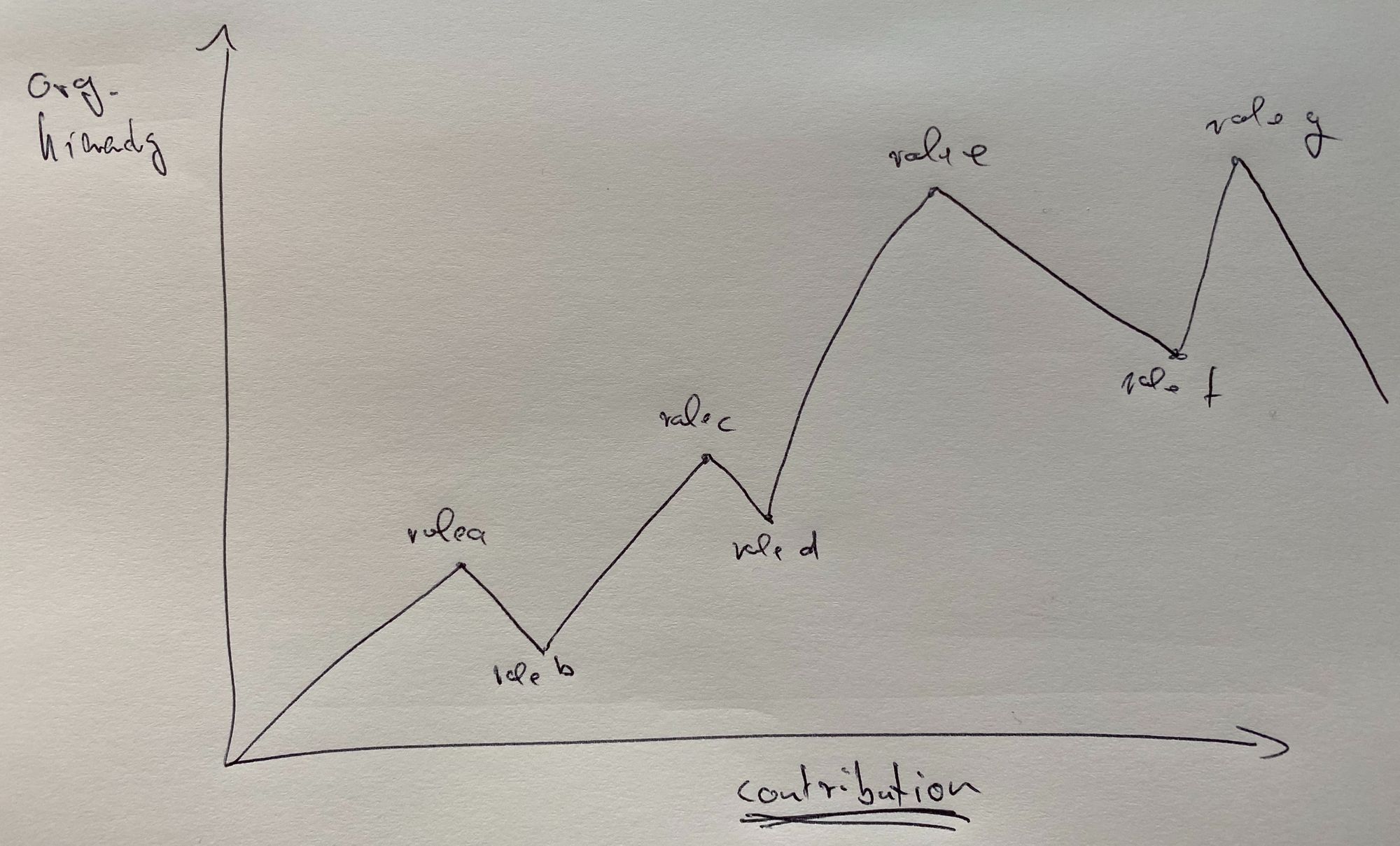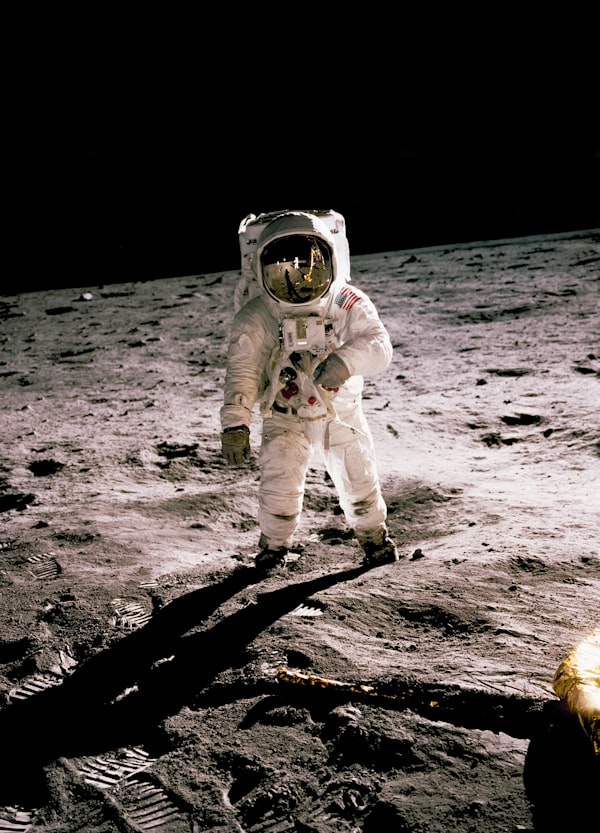NASA has a peculiar career path for some of its ‘top performers’. Rather than progressing in the organizational hierarchy, it's about progressing one's contribution to the mission. And those two might not always be the same thing.
A generic sketch may look like this:

What if your career progression looked like this? Would you consider it a success? A bumpy road to the top? What if at the last station of your career you were not back at the top? Would it then be a failure?
NASA astronauts take this career path. They may start out focused entirely on training, taking up additional operational and managerial responsibilities, perhaps being the CAPCOM (Capsule Communicator), i.e. direct point of contact for astronauts to the ground team, along the way. Of course, at some point they may be lucky to go to space.
On their return, they are not put on a pedestal; instead, they debrief – for months – to help make the next missions better. Then they take up an operational or managerial role to contribute to the organization with their new experience; perhaps they go on to train a new generation of astronauts, all while working on their own readiness for a potential second space flight (which may never come).
NASA astronauts would not consider that career path a failure.
And so perhaps the first chart was misleading. In the ‘NASA model’ it’s not so much about progressing from bottom to top in the organizational hierarchy, but about progressing your contribution to the organization’s mission, so better captured like this:

You are moving up and down in the hierarchy. But in the process you continuously increase your contribution to the organization's mission.
In the words of Chris Hadfield, retired astronaut and author of “An Astronaut’s Guide to Life on Earth”:
“[A]stronauts continuously move up and down, rotating through different roles and ranks. From an organizational standpoint this makes sense: it keeps the space program strong at all levels and also reinforces everyone’s commitment to teamwork in pursuit of a common goal […] that’s much bigger than we are as individuals. […] At NASA it’s just a given that today’s star will be tomorrow’s stagehand. […] And sooner or later you realize that it’s better for everyone, including you, if you climb down the ladder graciously.” (p. 268)
The quote highlights multiple benefits of the model:
- Experience & knowledge circulates within the organization, making the various functions stronger for it
- Humility is a cornerstone and expectation in the organizational culture. Putting one’s ego in check for the benefit of others
- Purpose-driven individuals contribute to more than their own careers
What if this model was more widespread?
What if a CEO’s next role was that of a business unit manager or a key account manager? What if a member of parliament did not run for another term but chose to support the next generation of political leaders instead?
